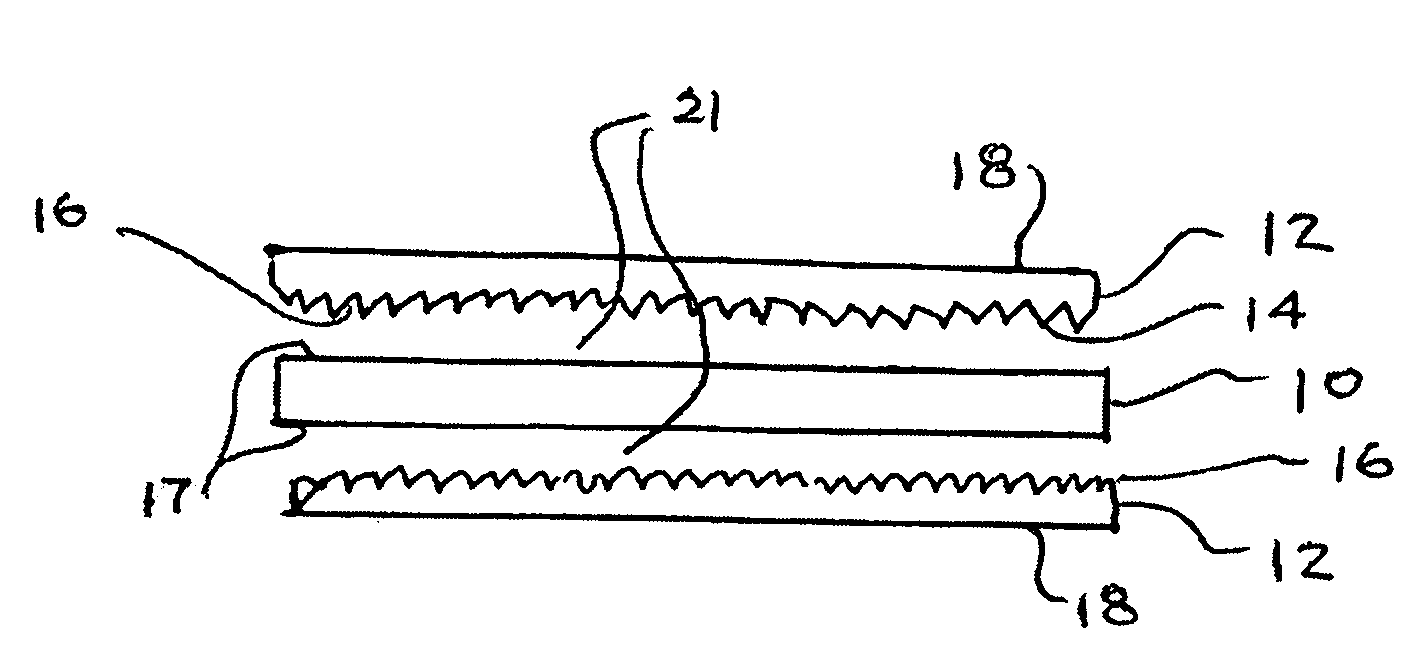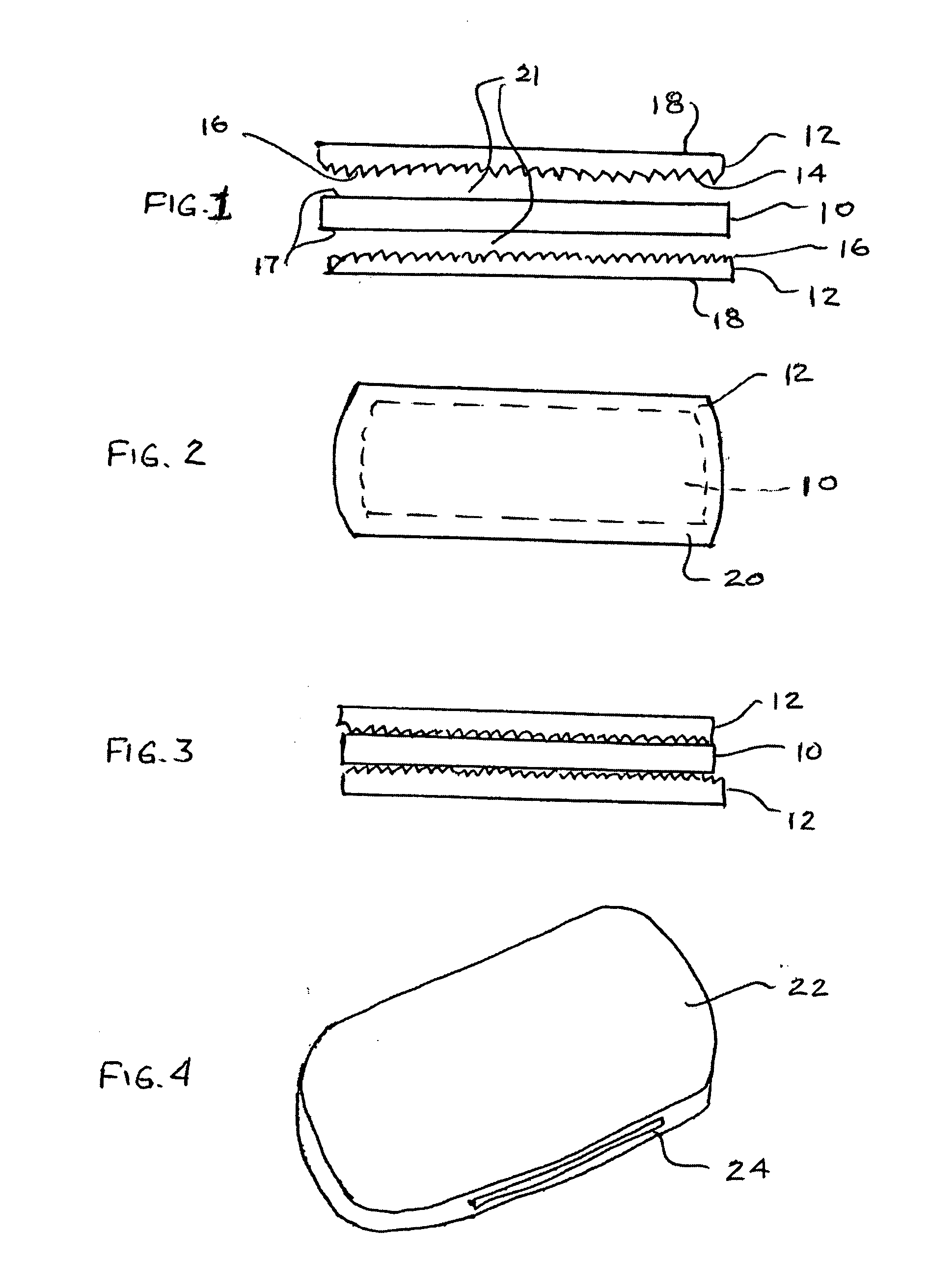Infant mattress
a mattress and mattress technology, applied in the field of mattresses, can solve problems such as skin ulcers, and achieve the effect of good, developmentally friendly mattresses
- Summary
- Abstract
- Description
- Claims
- Application Information
AI Technical Summary
Benefits of technology
Problems solved by technology
Method used
Image
Examples
Embodiment Construction
[0021] Taking, therefore, FIG. 1, there is shown a side, exploded view of the various components that make up the present mattress. As can therefore be seen, there is an inner foam layer 10 and a pair of outer foam layers 12 that basically sandwich the inner foam layer 10 therebetween when the mattress is assembled.
[0022] The materials of the inner and outer foam layers 10, 12 are specially selected to achieve the overall benefit of the mattress of this invention. Accordingly, the inner foam layer 10 is an open or closed cell, elastomeric foam, such as urethane, that is relatively stiffer or less resilient than the outer foam layers 12 and can be comprised of a foam such as North Carolina Foam Ultra Cell UC-17, having a density of about 1.7 pounds per cubic foot, a resilience (% rebound) of 59-66 and a total thickness of about 0.75 inches. The range of thicknesses for the inner foam layer 10 can be from about 0.25 inches to about 1.0 inch for suitability as an infant mattress, howe...
PUM
 Login to View More
Login to View More Abstract
Description
Claims
Application Information
 Login to View More
Login to View More - R&D
- Intellectual Property
- Life Sciences
- Materials
- Tech Scout
- Unparalleled Data Quality
- Higher Quality Content
- 60% Fewer Hallucinations
Browse by: Latest US Patents, China's latest patents, Technical Efficacy Thesaurus, Application Domain, Technology Topic, Popular Technical Reports.
© 2025 PatSnap. All rights reserved.Legal|Privacy policy|Modern Slavery Act Transparency Statement|Sitemap|About US| Contact US: help@patsnap.com


